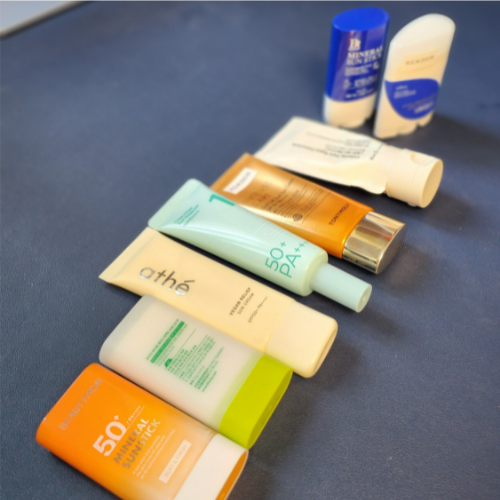What are the differences in expression styles for cosmetics?
Here is WITH.C’s experience with Korean Matte sunscreen:
In the past, an Indian buyer requested a matte sun stick, so I sent a sample from our partner manufacturer.
Since the product immediately controlled oil and left a matte finish, I was confident the buyer would like it.
However, contrary to my expectations, the buyer described it as very “heavy”.
Initially, I interpreted “heavy” to mean “not matte and oily” but upon further clarification, the buyer consistently used the term “heavy”.
To understand better, I tried various products on my face, regardless of whether they were labeled as lightweight, matte, or moisturizing.
I realized that the buyer’s term “heavy” referred to the initial sensation when applied.
Even though the product promised a powdery finish, the solid nature of the sun stick made it feel heavy upon application.
Especially in the case of physical sunscreens, the UV-blocking ingredients are in powder form, so they can feel relatively heavier.
Thus, we need to develop a product that feels lighter upon application, even if it sacrifices some matte finish.
How about sunscreen?
When requested for a korean matte sunscreen, we began searching for a suitable product in Korea.
Unlike sun sticks, we couldn’t find a “korean matte sunscreen” that met our criteria.
In Korea, “matte sunscreen” products are usually designed for specific skin types rather than climate considerations.
Hence, products labeled as “matte sunscreen” tend to control oil and feel heavier upon application.
Considering the hot and humid Korean summer, would such products really be favored?
Personally, I prefer products that apply lightly and thinly, then achieve a matte finish with my base makeup.
While preferences vary by country, in hot and humid climates, “matte products” are typically expected to be “lightweight and non-oily.”
This brings to mind formulations that are more watery with higher moisture content.
However, one must consider that such formulations may become even thinner and overflow easaily when it uses at higher temperatures.
Product testing conditions can vary significantly between an air-conditioned office and an average household or outdoor environment, affecting product temperature and performance.
Thus, understanding the country and the product’s suitability for its climate is crucial, as different terminologies and interpretations exist across regions.

